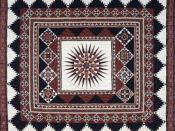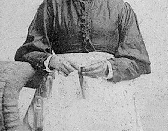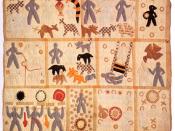Quilting: An African American Tradition
The history of African American women in quilting is almost as old as the history of America. Black slave women were needed for spinning, weaving, sewing and quilting on plantations and in other wealthy households (Johnson 1). After the Civil War, many African American women went to work in households as housekeepers while others helped out on small farms (Johnson 1). Quilts were made for everyday use out of necessity. Quilts were made from scraps, discarded clothing, and feed sacks (Johnson 1). In studying the roots of African American quilting the difficulty lies in the fact that few documented quilts exist today. Quilt historians have found that, for the most part, black women made their quilts in the same styles that were popular with the general population during any given period. Harriet Powers and Rosie Lee Tompkins are familiar names when it comes to African American quilt makers.
Both of these women are from completely different generations but their religion inspired them to produce their art. Although these women use different style techniques to create their quilts, through their quilt making these ladies keep the African quilt making tradition alive, and also show how the African tradition has been passed down from generation to generation.
Theories have been proposed that link African American women's quilting to their African roots. Originally in Africa most of the textiles were made by men. Yet when slaves were brought to the United States their work was separated according to Western standards and women took over the tradition ("African American Quilting"). However, this strong tradition of weaving left a visible mark on African American quilting. The use of strips, similar strips of reed and fabric used in men's traditional weave, are...


